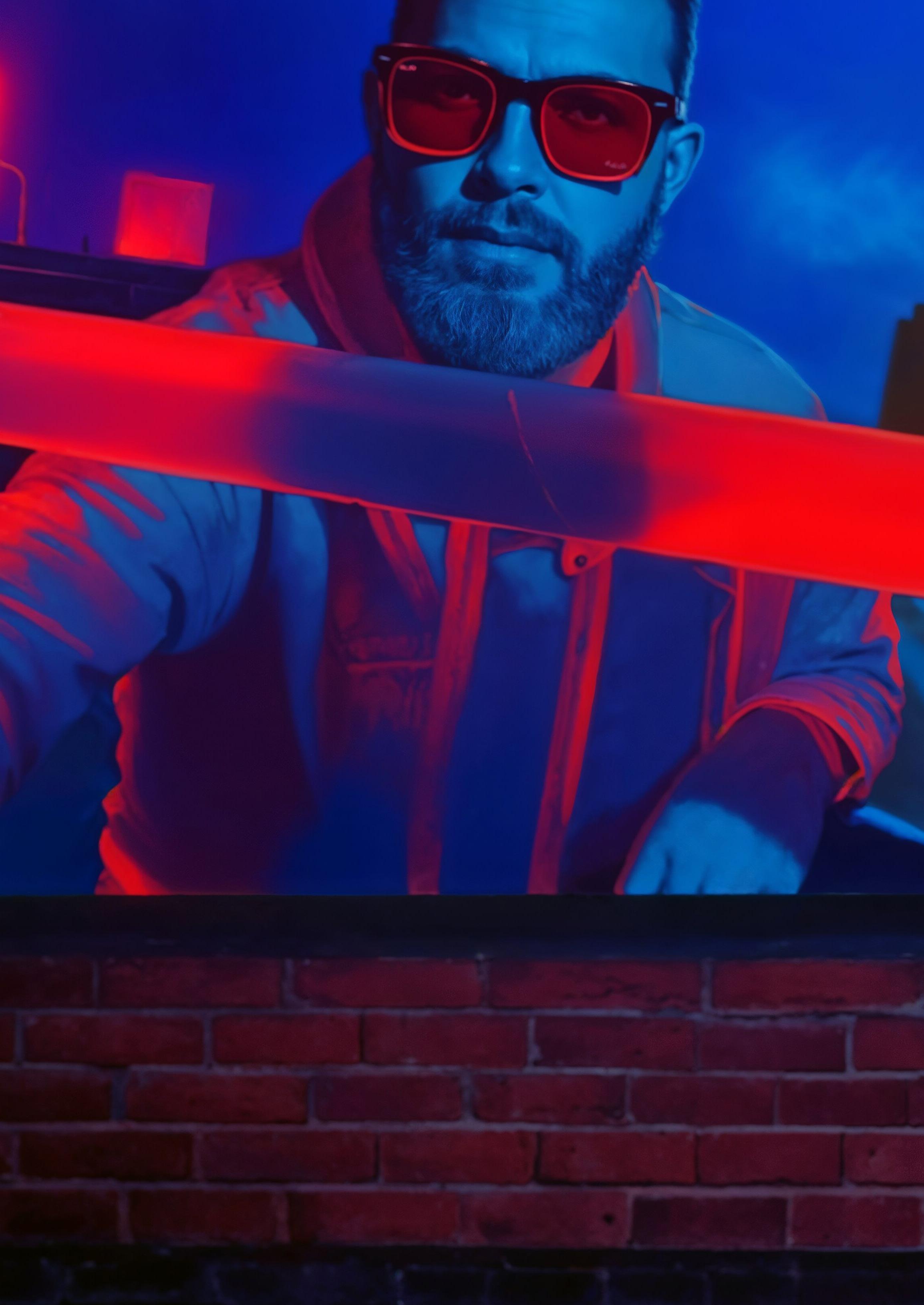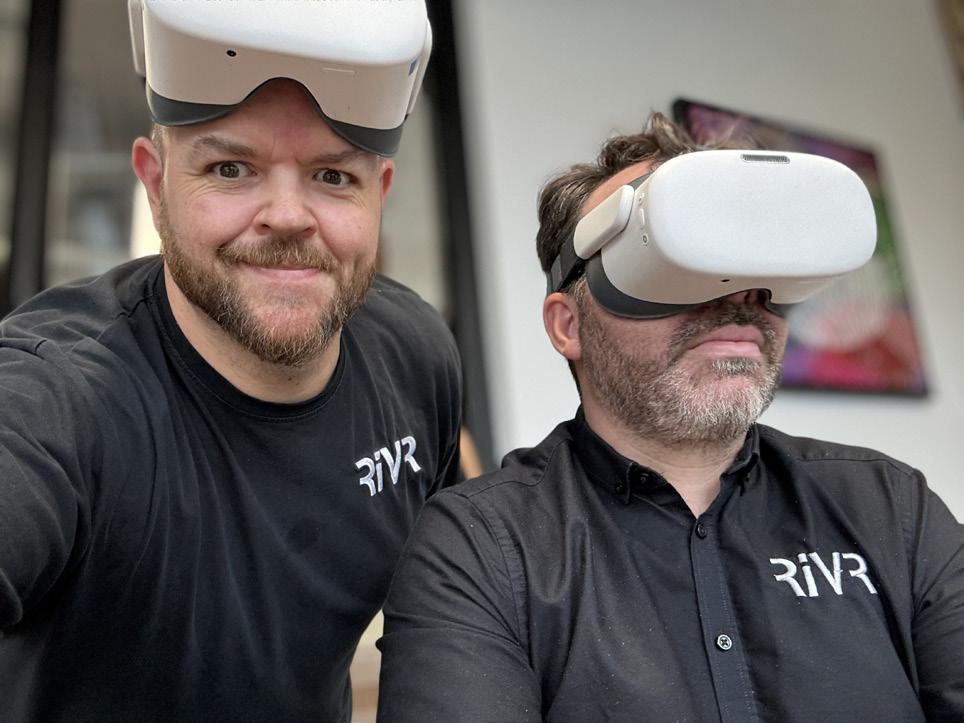
5 minute read
Immersive Revolution
RiVR's alex Harvey says the future is right in front of your eyes.
Forget clicking through endless “Next” buttons or taking quizzes that barely skim the surface - learning is changing. And it’s changing fast.
The next generation of training isn’t built around slide decks and accordion text boxes. It’s built inside a headset, and it’s already being deployed across the UK and beyond. Companies at the forefront of this immersive learning revolution are showcasing the technology’s potential. RiVR (Reality in Virtual Reality), for instance, emerged from the UK’s “Silicon Spa,” with founder Alex Harvey bringing his experience from the world of game development to public service and corporate training that would become a key focus for such specialised VR development.
The initial applications often involved high-stakes scenarios. For example, specialist developers first used photorealistic VR environments to train UK government personnel in handling counterterrorism situations. These weren’t abstract mockups but were often based on scanned real-world environments, recreated with exacting detail.
This allowed users to walk through realistic situations and train without real-world risk. Such capabilities soon drew attention from international bodies, including U.S. government agencies like the TSA and border patrol, who also adopted VR for specialised training modules.
But what does this mean for the broader world of e-learning?
It signifies a potential shift away from traditional digital methods to experiences that can deliver a more profound impact. The compelling case for VR in learning is built on several key advantages:
Deepened Engagement and Focus: VR environments inherently command attention. By minimising external distractions and fully immersing the learner, VR can significantly enhance concentration, transforming learners from passive observers into active participants.
Enhanced Knowledge Retention: Experiential learning is notably powerful. A PwC report on immersive technologies highlighted that learners in VR can absorb information up to four times faster than in traditional classroom settings or conventional e-learning. They also tend to feel more emotionally connected to the content, a crucial factor for long-term memory formation.
Safe Practice for High-Stakes Scenarios: One of VR’s most significant contributions is the ability to simulate dangerous, complex, or costly situations without real-world repercussions. This is invaluable for training in fields like emergency response, intricate machinery operation, or even delicate surgical procedures. Trainees can practise, make mistakes, and learn from them in a controlled, entirely safe virtual space.
Realistic Skill Development: VR allows for the creation of highly detailed and interactive simulations. In forensic science training, for example, virtual crime scenes can be meticulously recreated, offering a level of realism and interactivity that is difficult to achieve with other methods. This facilitates the development of practical, transferable skills.
Accessibility and Repeatability: Complex real-world training scenarios can be expensive and logistically challenging to arrange consistently. VR allows these scenarios to be easily replicated and accessed on demand, providing standardised training experiences for numerous learners as often as required.

The practical application of these benefits is evident in the types of VR solutions being developed. For instance, turnkey solutions are emerging to address the need for scalable and easily deployable training. Certain turnkey systems, for example, package pre-configured VR headsets with a secure charging dock and an integrated router, enabling full offline deployment. This means trainers can roll out immersive sessions virtually anywhere, from a remote industrial site to a city-centre classroom, and can synchronise headsets for group training, assessments, or skills refreshers. Clients can often load their own e-learning content, customising the systems to their specific workflows.
“This is stage one virtual reality,” as Alex Harvey of RiVR noted, referring to such accessible systems. “It’s robust, and it’s designed to make immersive training as easy to deploy as a PowerPoint presentation - but far more powerful.”
That power is particularly evident in photorealistic training modules. For crime scene investigation, advanced virtual tools allow police forces and forensic teams to enter a virtual scene, assess evidence, and build their case much as they would in reality, but within a true-to-life 3D scanned environment. Combined with repeatable practice, this kind of realism is proving transformative for emergency services, defence, and any training provider prioritising consistency, safety, and rapid skill acquisition.
While creative applications of VR also exist in arts, heritage, and cultural installations, the emphasis in many professional e-learning contexts is on what immersive training can achieve for hard skills, compliance, and operational readiness. Whether it’s fire services running a new drill, engineers practising maintenance on complex equipment, or a corporate team learning crisis management, the core strength of immersion lies in allowing people to experience what they’re learning, not just read or hear about it.
And there’s something else worth mentioning: once someone puts on the headset, the conversation often changes. As Harvey also observed, “We can talk about VR all day, but the truth is - you have to feel it. You have to be inside it to understand what makes it different.”
As immersive technologies continue to evolve from tethered, complex setups to more affordable, standalone, mobile-friendly headsets, the barriers to adoption are steadily lowering. Content and platforms are becoming more readily available. Now, more than ever, e-learning professionals have an opportunity to integrate something radically more effective into their strategies.
It’s time to rethink what online learning looks like - and more importantly, what it feels like. The next chapter isn’t flat. It’s spatial. It’s interactive. It’s remembered.
And if you’re curious? If you want to know what the future of training feels like? Put on a headset and experience it for yourself.

Alex Harvey is Creative Director at RiVR, a UK-based immersive training company. Connect wth him here: https://www.linkedin.com/in/alexharvey-81000649/
Discover more about RiVR: www.rivr.uk










